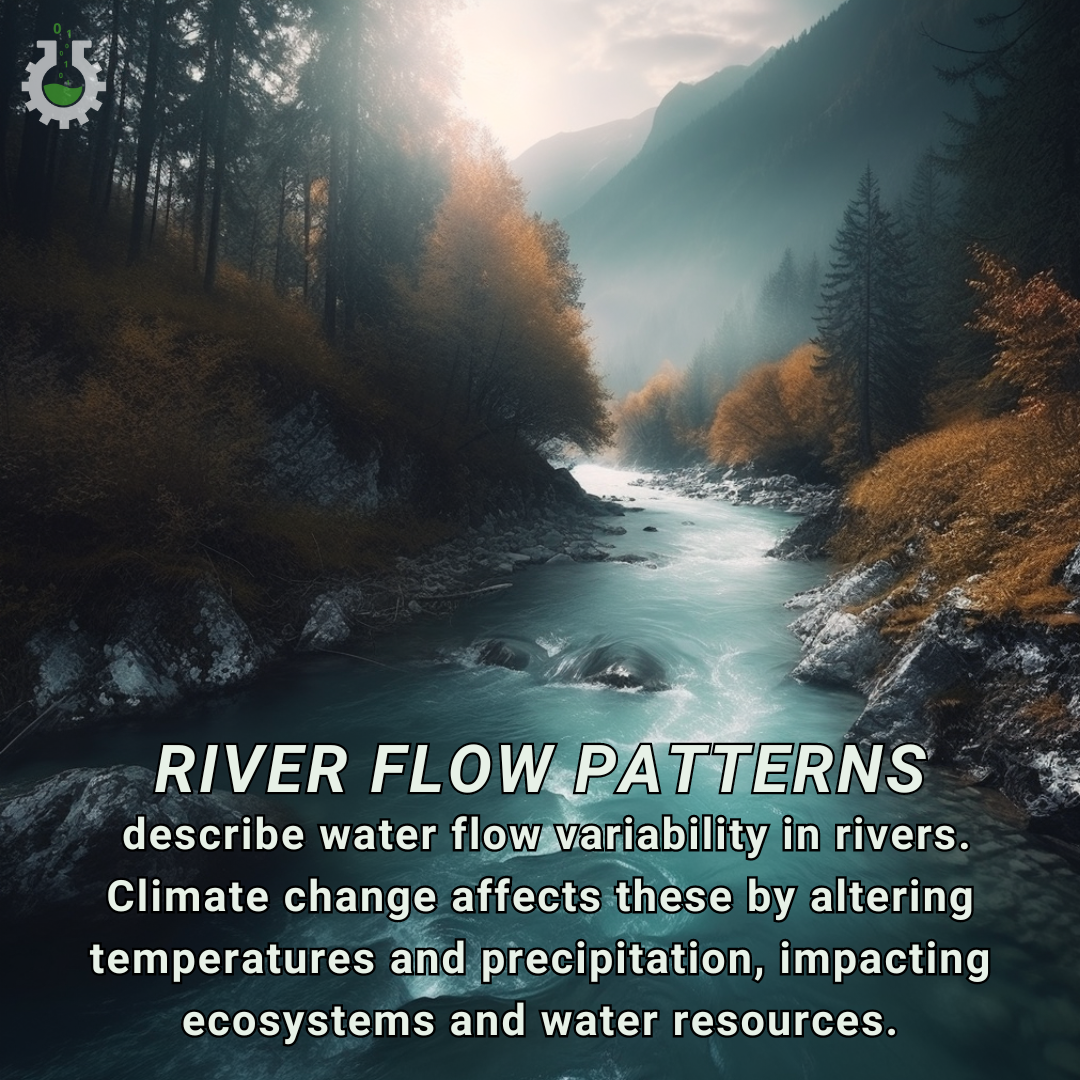August 1, 2024
Climate Change Poster Collection of the Day – River Flow Patterns
Book a Demo
Today’s Climate Change Poster Collection focus on River Flow Patterns. Rivers are the arteries of our planet, channeling life-sustaining water through landscapes, nourishing ecosystems, and supporting human civilizations. The patterns of river flow—the timing, volume, and variability of water movement—are governed by a complex interplay of climatic, geological, and ecological factors. Traditionally, river flow patterns are shaped by seasonal variations in precipitation, snowmelt, and glacial melt, which together create predictable cycles of high and low flows. These patterns are crucial for maintaining the health of aquatic ecosystems, supporting agriculture, enabling transportation, and providing drinking water. However, the stability of these patterns is increasingly under threat from the multifaceted impacts of climate change.
As the planet warms, the hydrological cycle is undergoing significant transformations. One of the most direct effects of climate change on river flow patterns is the alteration of precipitation regimes. Regions that once experienced predictable seasonal rainfall are now facing erratic weather patterns. Some areas are witnessing an increase in the frequency and intensity of extreme rainfall events, leading to sudden surges in river flows that can overwhelm flood defenses and cause widespread damage. Conversely, other regions are grappling with prolonged droughts, resulting in diminished river flows that strain water supplies for agriculture, industry, and households.
The impact of climate change on river flow patterns is particularly pronounced in mountainous regions where rivers are fed by snowmelt and glacial runoff. Rising temperatures are causing glaciers to retreat at unprecedented rates, reducing the long-term availability of meltwater. In the short term, this can lead to increased river flows during the spring and early summer as more ice melts, but as glaciers diminish, the overall contribution to river flow declines. This shift can disrupt the delicate balance of ecosystems that depend on consistent water availability throughout the year. For example, fish species that rely on specific flow conditions for spawning may find their habitats altered or destroyed, leading to declines in biodiversity.
Furthermore, the timing of snowmelt is also changing. Warmer winters and springs cause snowpacks to melt earlier, resulting in peak river flows occurring weeks or even months ahead of historical norms. This can lead to a mismatch between water availability and agricultural needs, as crops may require water during periods when river flows are naturally lower. The consequences extend to hydropower generation as well, which depends on predictable river flows to produce electricity. Inconsistent water availability can lead to energy shortages and increased reliance on fossil fuels, further exacerbating the problem of climate change.
The socio-economic implications of altered river flow patterns are profound. Flooding, driven by extreme rainfall and rapid snowmelt, poses a significant threat to communities, infrastructure, and agriculture. The economic costs of flood damage can be staggering, with impacts ranging from the destruction of homes and businesses to the contamination of water supplies and loss of crops. On the other hand, reduced river flows during dry periods can lead to water scarcity, affecting everything from drinking water availability to industrial processes. In agriculture, water shortages can lead to reduced crop yields, higher food prices, and increased food insecurity, particularly in regions that are already vulnerable.
Indigenous communities, who have developed intricate knowledge systems and practices based on historical river flow patterns, are particularly at risk. These communities often rely on rivers for fishing, agriculture, and cultural practices. The rapid changes in river flow patterns challenge their traditional ways of life and threaten their cultural heritage. Efforts to adapt to these changes must involve the inclusion of indigenous knowledge and the participation of these communities in decision-making processes.
Addressing the challenges posed by climate change to river flow patterns requires a multifaceted approach. Robust climate modeling is essential to predict future changes and inform water management strategies. Adaptive water management practices, such as the construction of reservoirs and the implementation of water-saving technologies, can help mitigate the impacts of altered river flows. Additionally, efforts to reduce greenhouse gas emissions are crucial to slowing the rate of climate change and preserving the stability of river systems.
The connection between river flow patterns and climate change is a stark reminder of the intricate and delicate balance that sustains life on Earth. As we navigate the challenges of a warming planet, understanding and addressing the impacts on our river systems will be essential to ensuring a sustainable future. By combining scientific research, innovative water management, and community engagement, we can work towards a world where rivers continue to flow, supporting ecosystems, economies, and cultures in harmony with the changing climate.
Discover an inspiring collection of climate change posters.



